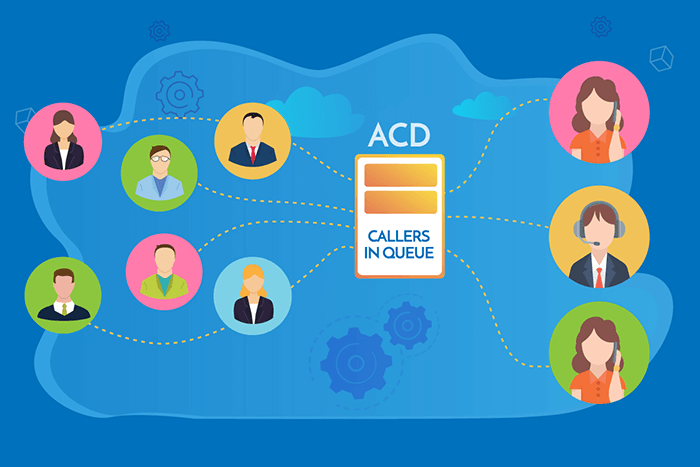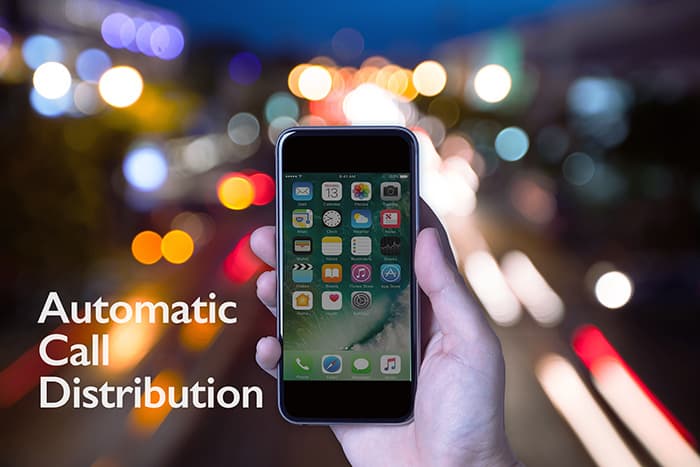Automation is being used by businesses all over the world in some capacity or the other. The main reason for this is because it can help simplify and take care of mundane processes, giving employees more room to be productive. In this post, we will discuss automatic call distribution (ACD), a type of phone system. We will also look at different routing strategies and the overall benefit of such a system.
Automatic Call Distribution: Definition
Automatic call distribution or ACD is a telephony system that receives calls and transfers them to the appropriate agent based on predetermined rules. These rules can be based on the area code of the incoming call or the time the call is being made, and so on.
Why Use an Automatic Call Distribution System?
An automatic call distributor system helps companies handle call traffic by effectively distributing calls. Common uses of an ACD system include:
- Managing calls during high traffic periods.
- Providing service after-hours or when agents/employees are unavailable.
- Automating basic information about the company and its services, troubleshooting solutions, FAQs for common queries, etc.
- Routing calls to specific departments, teams, agents based on rules and conditions that work best for your business.
- Optimizing agent and employee productivity.
- Connecting remote agents or employees in different offices across the globe through virtual phone systems.
- Reducing wait times yet at the same time increasing the rate of first-call resolution.
How Does an Automatic Call Distributor Work?
An automatic call distribution system is designed to distribute calls effectively and not just randomly. To do so, it uses predetermined rules and conditions. ACD routing is determined by several factors such as call traffic, time of day, location of the incoming call, skills required, and so on. Here are a few common ACD routing options:
1. Round-robin distribution
This routing strategy ensures that calls are distributed equally among your team so no agents are overburdened or remain idle for too long. Calls go down a list of agents and after the last agent answers the call, the loop starts with the first agent again.
2. Least-occupied agent
In this ACD routing option, calls are sent to agents who have been least occupied; in other words, agents who have been serving less call handling time. This ensures that every agent is putting in the necessary hours of work.
3. Programmed distribution
Here, the account or call center manager determines beforehand how calls will be spread across agents. These rules are based on factors such as agent experience, language skills, location, and so on.
4. Simultaneous ringing
With simultaneous ringing, incoming calls ring on multiple devices and phones at the same time. This way, an available agent or employee can quickly answer the phone and assist the caller.

Difference Between ACD and IVR
Most often, the terms ACD and IVR are used interchangeably. However, these two systems are slightly different. In fact, IVR is considered a part of ACD. So, what is the difference between ACD and IVR?
An interactive voice response or IVR system is an automated voice response system. It answers calls — like an automatic call distribution system — and provides callers with menu options. Unlike ACD, IVR requires caller input such as pressing a key or number on the dial pad or saying the number of the option they want. For example, “Press 1 for [], Press 2 for [].” Based on what the caller needs, they are transferred to an employee or to the next set of menu options. IVR systems can also provide self-serving options such as “Press 1 to activate your account. Press 2 to make a payment. Press 3 to learn about our services,” and so on.
ACD, on the other hand, identifies callers based on the number they are calling from and connects them to the most appropriate agent instantly. This routing can be based on a variety of factors such as time of the call, location of the call, agent skills, etc.
Is ACD Right for You?
If you want to streamline your incoming calls and create a system that is effective and efficient, then an ACD or IVR system can help. These systems use automation to make simple processes move faster, thereby giving your team more time to provide better customer service. To learn more about these systems, reach out to one of our experts today!


